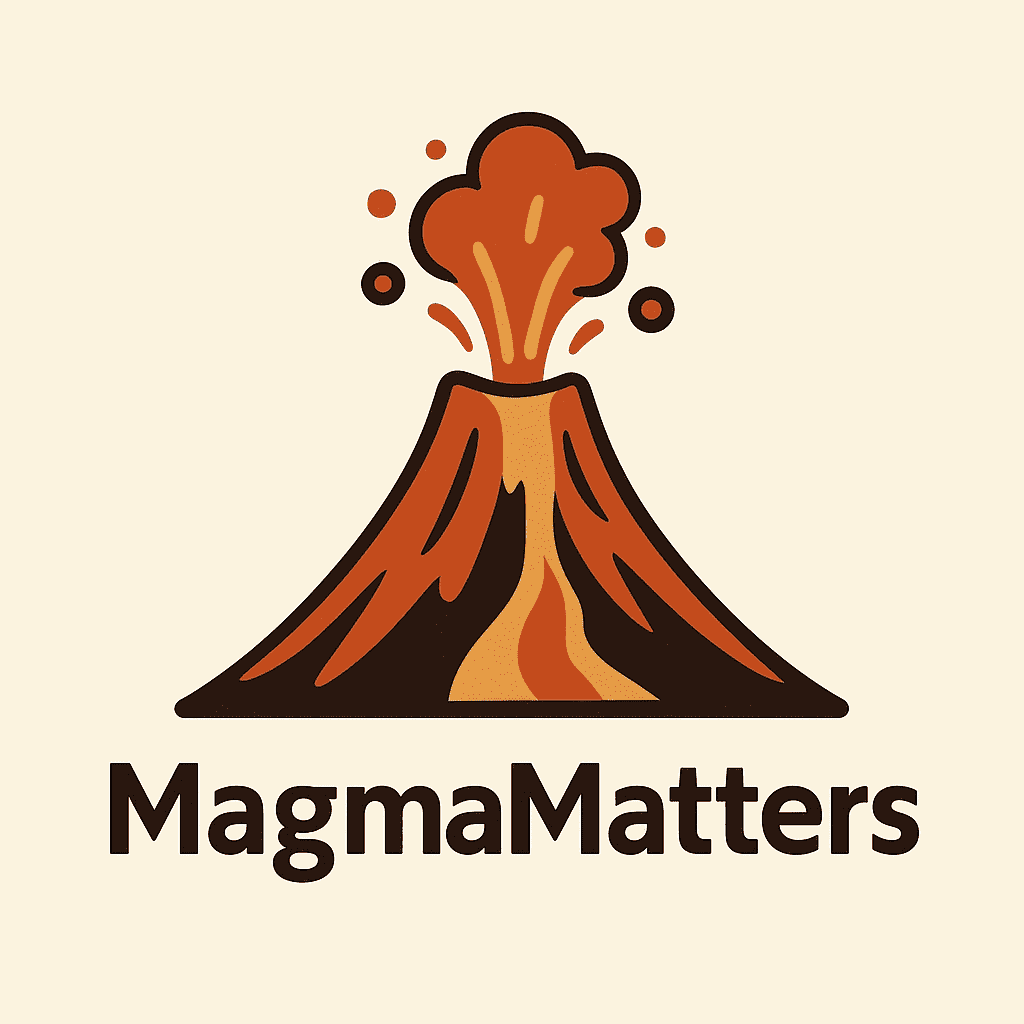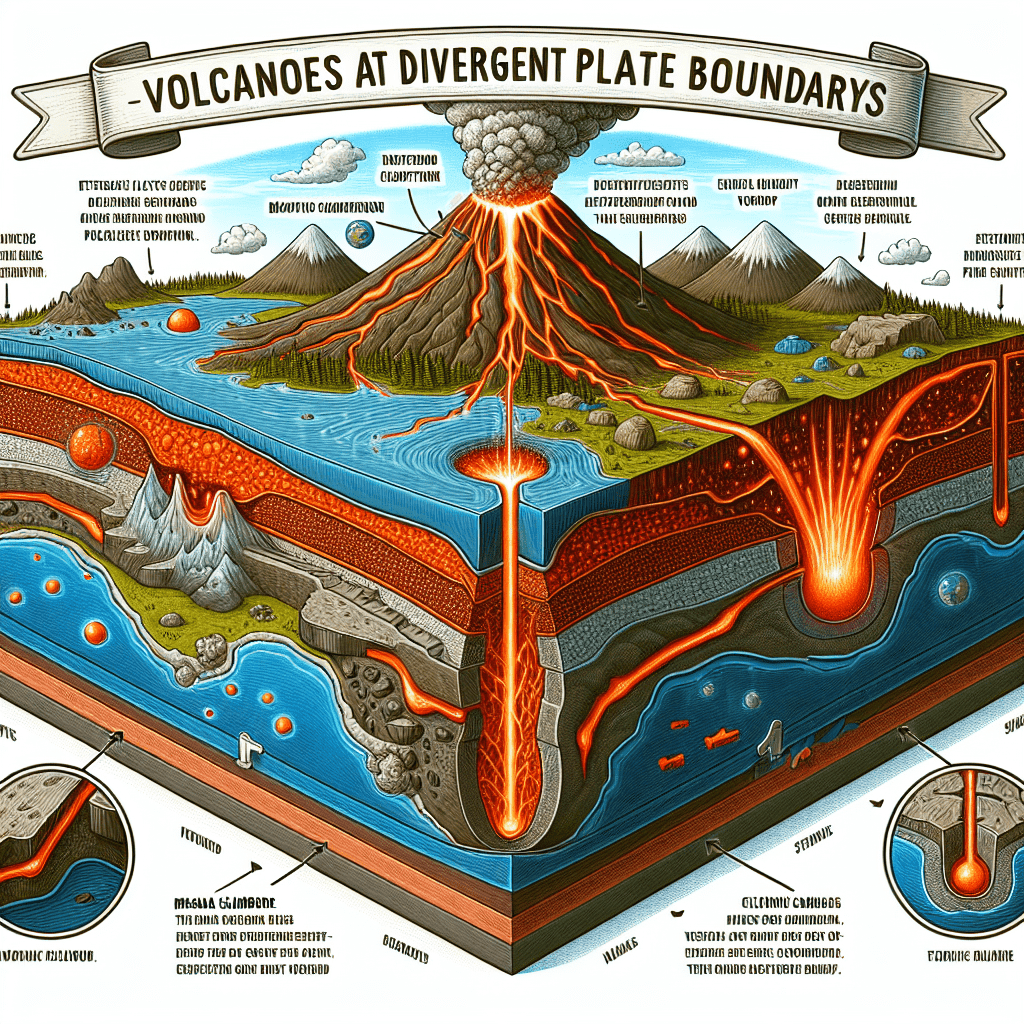If you’ve ever been fascinated by the Earth’s fiery and explosive wonders, then the subject of volcanoes at divergent plate boundaries is sure to intrigue you. Volcanoes are not just random mountains that spew lava; they are magnificent displays of the Earth’s immense power and constant change. In this article, we will explore the fascinating facts surrounding volcanoes at divergent plate boundaries – where the Earth’s tectonic plates separate and create new crust. From the different types of volcanoes to the hazards and benefits they bring, this exploration will give you a deeper understanding of these natural wonders and the impact they have on our world. So, let’s embark on this exciting journey to uncover the top facts about volcanoes at divergent plate boundaries. Get ready to be amazed!
Understanding Divergent Plate Boundaries
Divergent plate boundaries are locations where tectonic plates are moving away from each other. This movement is caused by the upwelling of magma from the mantle, which creates new crust. As the plates separate, they create a gap or rift between them. This rift is filled with molten rock, also known as magma, which solidifies and forms new crust. Divergent plate boundaries are characterized by volcanic activity and the formation of mid-ocean ridges.
How Volcanoes Form at Divergent Plate Boundaries
Volcanoes at divergent plate boundaries are formed due to the movement of tectonic plates. The Earth’s lithosphere is divided into several large plates, and these plates float on the semi-fluid asthenosphere. When two plates diverge, the asthenosphere rises and fills the gap between the plates with magma. This magma then rises to the surface and forms volcanoes. The presence of magma is crucial for the formation of volcanoes at divergent plate boundaries.
Magma plays a key role in creating volcanoes at divergent plate boundaries. As the plates move apart, the pressure on the mantle decreases. This decrease in pressure allows the mantle to partially melt, forming magma. The magma rises to the surface through cracks in the Earth’s crust, creating a volcanic vent. Once the magma reaches the surface, it erupts, releasing gases, ash, and lava. This eruption forms a volcano.
Types of Volcanoes at Divergent Boundaries
Shield volcanoes are a common type of volcano found at divergent plate boundaries. These volcanoes have a broad, gently sloping shape and are often formed by repeated eruptions of fluid lava. The lava flows out of the volcano and spreads out in all directions, creating a shield-like shape.
Fissure eruptions are another type of volcanic activity that occurs at divergent plate boundaries. Instead of erupting from a single vent, fissure eruptions occur along a long crack or fissure. Magma rises through the fissure and erupts along its entire length, creating a long ridge of volcanoes.
Seafloor spreading and mid-ocean ridges are also created at divergent plate boundaries. As the plates move apart, magma rises to fill the gap, creating new crust. This process is known as seafloor spreading. Over time, the accumulation of new crust forms a long ridge on the ocean floor, known as a mid-ocean ridge.
Key Features of Volcanoes at Divergent Boundaries
Volcanoes at divergent plate boundaries exhibit certain key features. One such feature is their eruption patterns. Volcanoes at divergent plate boundaries tend to have frequent eruptions, as the constant movement of the plates provides a continuous supply of magma to the surface. These eruptions are often characterized by lava fountains and explosive bursts of gas and ash.
The viscosity and gas content of lava also play a role in the behavior of volcanoes at divergent plate boundaries. The viscosity of lava determines how easily it flows, with more viscous lava forming steep-sided volcanoes and less viscous lava creating gentle slopes. The gas content of lava affects the explosiveness of eruptions, with higher gas content leading to more explosive eruptions.
The frequency and scale of eruptions are also important features of volcanoes at divergent plate boundaries. Due to the continuous supply of magma, eruptions at divergent plate boundaries can occur frequently. However, they are generally not as large or explosive as eruptions at convergent plate boundaries.
Geographic Distribution of Volcanoes at Divergent Boundaries
Volcanoes at divergent plate boundaries are found in several key locations around the world. One such location is the Mid-Atlantic Ridge, which runs down the center of the Atlantic Ocean. This ridge marks the boundary between the Eurasian and North American plates. Volcanic activity along the Mid-Atlantic Ridge has created numerous volcanic islands, such as Iceland and the Azores.
The East African Rift system is another example of a divergent plate boundary with active volcanism. This rift extends from the Red Sea in the north to Mozambique in the south. The East African Rift system has formed a series of rift valleys and volcanic mountains, including Mount Kilimanjaro and Mount Nyiragongo.
Iceland is a famous case study for volcanoes at divergent plate boundaries. The island sits atop the Mid-Atlantic Ridge and is characterized by a high concentration of volcanoes. Iceland experiences frequent volcanic eruptions and has a unique landscape shaped by volcanic activity.
Hazards from Volcanoes at Divergent Boundaries
Volcanic eruptions at divergent plate boundaries can pose significant risks and have the potential for disaster. These eruptions release large amounts of lava, ash, and gases, which can cause destruction and loss of life. The lava flows from eruptions can engulf and destroy buildings and infrastructure in their path.
One of the secondary hazards associated with volcanic eruptions at divergent plate boundaries is the formation of tsunamis. Large amounts of lava entering the ocean can displace water, creating powerful tsunami waves. These waves can travel long distances and cause significant damage along coastlines.
Risk assessment and prediction are crucial in mitigating the hazards of volcanic eruptions. Monitoring techniques, such as seismic activity and gas emissions, can help scientists predict when an eruption may occur. This information can then be used to evacuate at-risk areas and minimize the impact on surrounding communities.
Benefits of Volcanoes at Divergent Boundaries
Despite the hazards they pose, there are also several benefits associated with volcanoes at divergent plate boundaries. One of the major benefits is the creation of new land and islands. As magma rises to the surface and solidifies, it forms new crust, which eventually builds up into landmasses. This process has led to the formation of many islands, such as Hawaii and Iceland.
Volcanoes at divergent plate boundaries are also associated with mineral deposits and geothermal energy. The volcanic activity can concentrate valuable minerals in the subsurface, which can be extracted and used in various industries. Additionally, the heat generated by volcanic activity can be harnessed to produce geothermal energy, which is a clean and renewable source of power.
The fertility of volcanic soils is another benefit of volcanoes at divergent plate boundaries. Volcanic ash and lava contain nutrients that enrich the soil, making it highly fertile for agricultural purposes. Many areas near active volcanoes have rich volcanic soils that support thriving agricultural industries.
Famous Volcanoes at Divergent Boundaries
Several famous volcanoes are located at divergent plate boundaries. One such volcano is Eyjafjallajökull in Iceland. Eyjafjallajökull gained international fame in 2010 when its eruption caused widespread disruption to air travel across Europe. The volcano is located on the Mid-Atlantic Ridge and is known for its explosive eruptions.
Erta Ale in Ethiopia is another well-known volcano at a divergent plate boundary. It is located in the Afar Depression, a part of the East African Rift system. Erta Ale is one of the few volcanoes in the world that has an active lava lake, making it a popular destination for volcanologists and adventurous travelers.
Kilauea in Hawaii is one of the most active volcanoes on Earth. This shield volcano is located on the Big Island of Hawaii, which is formed by the movement of the Pacific plate over a hotspot. Kilauea has been erupting continuously since 1983 and has created vast lava flows that have expanded the island’s coastline.
Impact of Climate on Volcanoes at Divergent Boundaries
The climate plays a significant role in the behavior of volcanoes at divergent plate boundaries. The presence of oceanic conditions can influence volcanic activity. For example, when magma enters the ocean, it rapidly cools and solidifies, creating a distinct volcanic feature known as a pillow lava. The interaction between the lava and water also produces steam, which can lead to explosive eruptions.
Another climate-related factor is the melting of ice caps and glaciers. As the Earth’s climate warms, ice caps and glaciers are melting at an accelerated rate. The influx of meltwater into volcanic regions can enhance volcanic activity by increasing the amount of water available to interact with magma. This can lead to more explosive eruptions and the formation of lahars, which are fast-moving volcanic mudflows.
Climate change may also impact future volcanic activity at divergent plate boundaries. As the climate continues to warm, the melting of ice caps and glaciers could increase, leading to heightened volcanic activity. Scientists are studying the potential links between climate change and volcanic eruptions to better understand this complex relationship.
Further Research on Volcanoes at Divergent Boundaries
Continued research on volcanoes at divergent plate boundaries is vital for understanding their behavior and mitigating their hazards. Advances in volcano monitoring techniques, such as satellite imagery and drones, are providing scientists with valuable data on volcanic activity. This information can help improve eruption prediction and early warning systems.
Studies on eruption prediction are also crucial for minimizing the impact of volcanic eruptions. By understanding the precursory signs and patterns of volcanic activity, scientists can better predict when an eruption may occur. This knowledge can then be used to evacuate at-risk areas and implement measures to protect surrounding communities.
Research is also focused on finding ways to minimize the impact of volcanic eruptions. This includes studying methods for controlling lava flows, developing better building materials to withstand volcanic ash, and improving emergency response systems. By investing in further research, we can continue to enhance our understanding of volcanoes at divergent plate boundaries and improve our ability to mitigate their effects.

